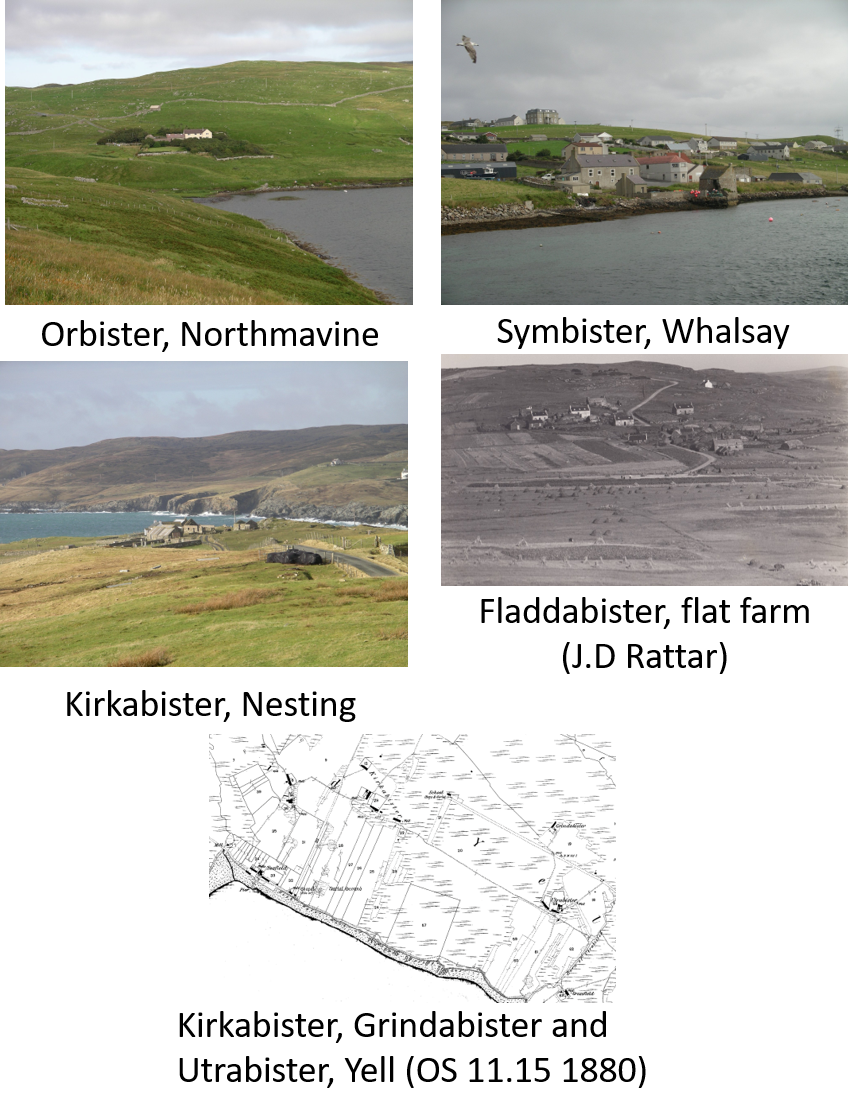Place name of the week - Bisters
Published: 21 April 2020

This week we feature place-names including the term -bister, from the Old Norse bólstaðr meaning a farm or dwelling place. Common throughout northern Scotland and the northern and western isles, the density in Shetland and Orkney is greater than in Norway and Iceland (around 50 in each).
Shetland place-names incorporate the element –bister or busta, in Orkney –bister, -bist and –bust, whilst in the Western Isles you find –bos, -bus, –boll and –pol names. In Caithness look for –best, –bster and pster place-names, and –boll, –ble, -bo and –pol in Sutherland and Ross & Cromarty.
Most names describe the location: Norbister is the northerly farm (norð), Isbister the easterly farm (austr) and Symbister is south (sunn). Fladdabister derives from flati (flat), Lunnabister lón (still part in a stream) and Keldabister kelda (well or spring).
Bólstaðr and staðr farm names were equally common in Shetland, but the former usually were about half the size. Sometimes there were groups of two or three neighbouring farms, like Kirkabister, Grindabister and Utrabister in Northavoe Yell, and Evrabister (upper) and Nedrabister (lower) in Weisdale.
Larger bisters were Wadbister (Unst), Kirkabister (Yell), Isbister and Symbister (Whalsay), Brebister (Waas) and Fladdabister. Early chapel sites are found at many bisters, including Isbister (North Roe), Isbister and Symbister (Whalsay), Brebister (Waas), Wadbister (Tingwall), Kebister, and Fladdabister. Chapels also gave their names to Kirkabisters in Yell, Lunnasting, Nesting and Bressay.
We hope you have enjoyed this blog.  We rely on the generous support of our funders and supporters to continue our work on behalf of Shetland. Everything we do is about caring for Shetland's outstanding natural and cultural heritage on behalf of the community and for future generations. Donations are welcomed and are essential to our work.
We rely on the generous support of our funders and supporters to continue our work on behalf of Shetland. Everything we do is about caring for Shetland's outstanding natural and cultural heritage on behalf of the community and for future generations. Donations are welcomed and are essential to our work.

